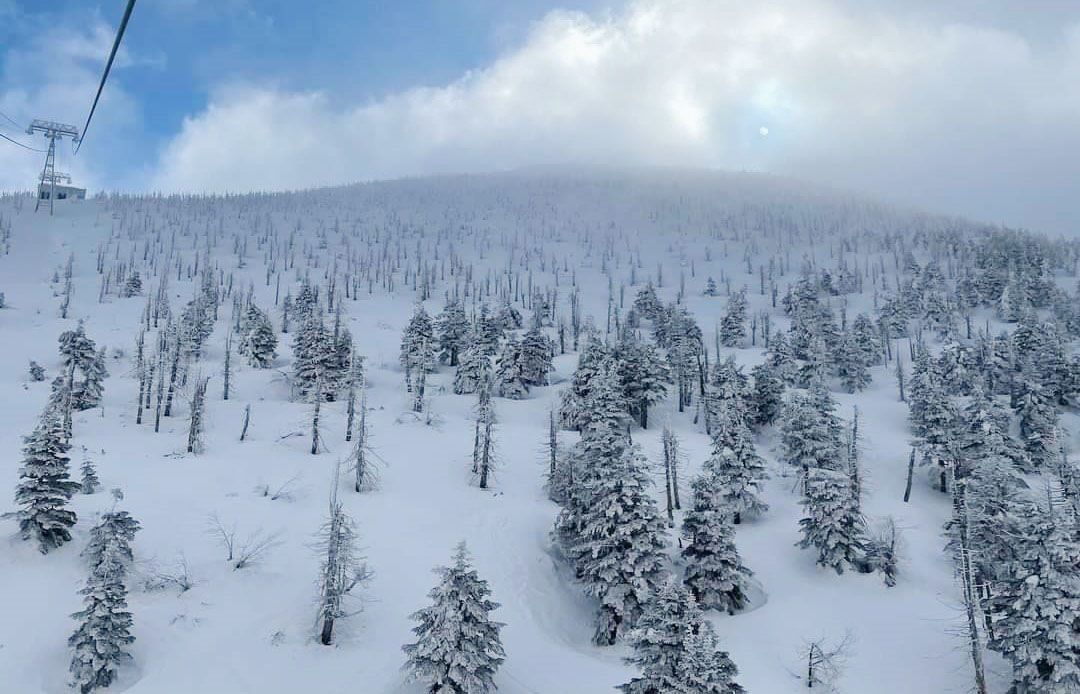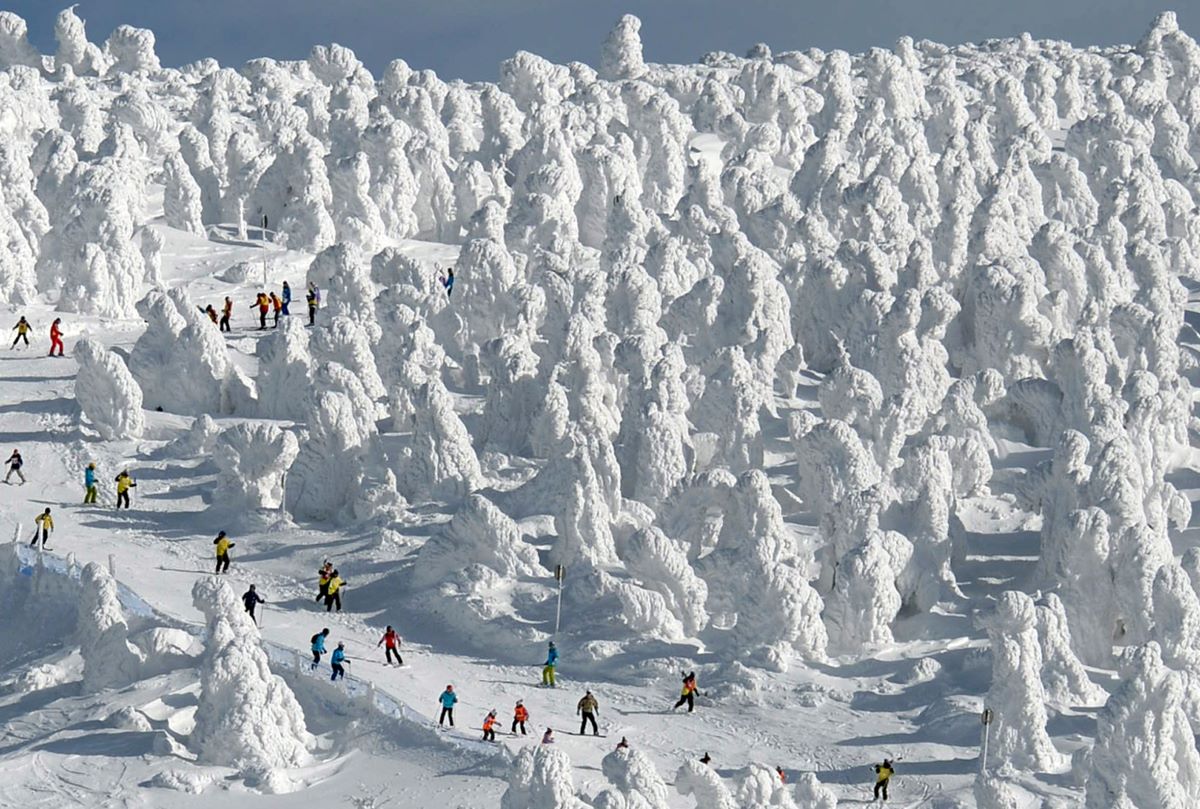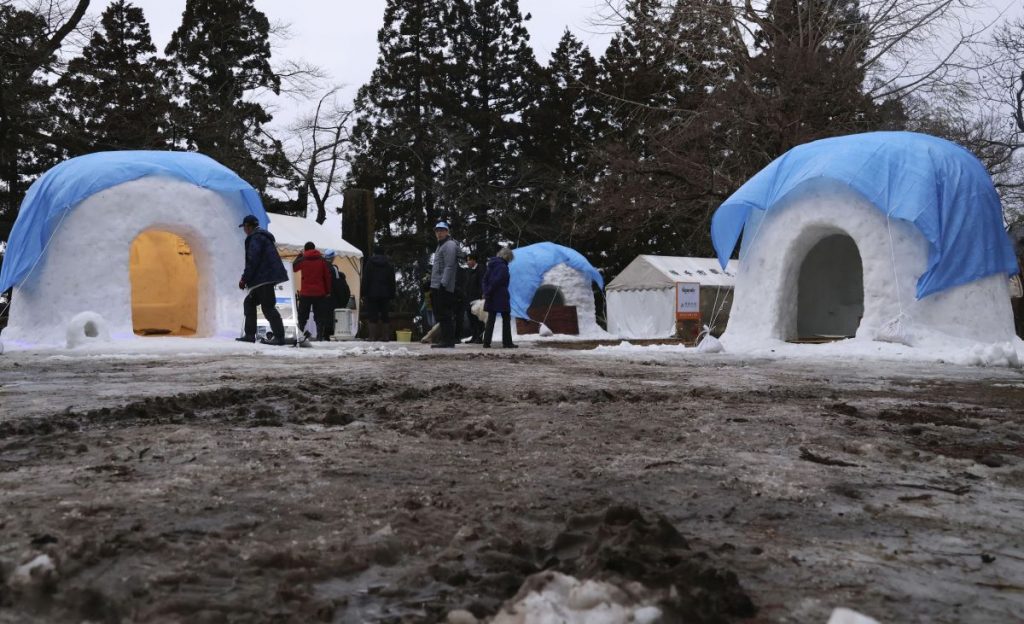
Trees of the Zao mountain range exposed after the snow monsters melted, February 16 (from Zao Ropeway's Facebook)
Read the full story on Japan 2 Earth - Rising Temperatures Melt 'Snow Monsters' in Japan's Iconic Winter Landscape
Winter landscapes in Hokkaido and Tohoku are changing due to rising temperatures. Unseasonably warm weather on February 14-15 caused the melting of the iconic ice formations known as "snow monsters" (juhyo).
Events were also affected. Blue tarps were draped over traditional Japanese snow domes (kamakura) for protection from the rain. There were reports of using balled-up sheets of newspaper instead of snow in annual snowball tournaments.
Least Snow in 20 Years
The Sendai Meteorological Observatory predicts that although Hokkaido and the Tohoku region are typically affected by cold air from late February, early March temperatures will be average or higher. They caution the public to be careful of fluctuating temperatures and potential avalanches.


(right) Snow monsters on January 21, 2015, during a typical cold winter. (©Sankei by Shiro Onishi)
Officials from the Zao Onsen Tourism Association in Yamagata, have reported melting of the 'snow monsters'. Called juhyo in Japanese, the snow and ice formations typically cover the trees in the Zao mountain range that spans Miyagi and Yamagata prefectures.
The snow monsters typically reach their peak around mid-February. But this year's snowfall has been described as "the least amount in twenty years."

In Yokote City of Akita Prefecture, the temperature exceeded 13 degrees Celsius on February 14, followed by rain on the 15th.
The snow domes (kamakura) at the Yokote Kamakura Festival, pelted by rain and wind, ended up with uneven surfaces. Efforts were made to protect them with blue tarps.
Continue reading the full story on Japan 2 Earth to learn more about the cancellation of a dog sled race due to melted snow.
And find more great articles on the environment and the challenges of achieving the SDGs on our affiliated website Japan 2 Earth (J2E), sparking a transition to a sustainable future.
RELATED:
- The Culprit Behind Red Snow and Accelerated Glacial Melting
- Predictions 2024: Collapsible Chopsticks, Less Snow, and the Rise of Luxury Camping
- Extreme Weather: How Supercomputers Prove the Effects of Global Warming
(Read in Japanese the two articles combined here from The Sankei Shimbun of February 16 and February 21, 2024.)
Author: Sankei Shimbun








